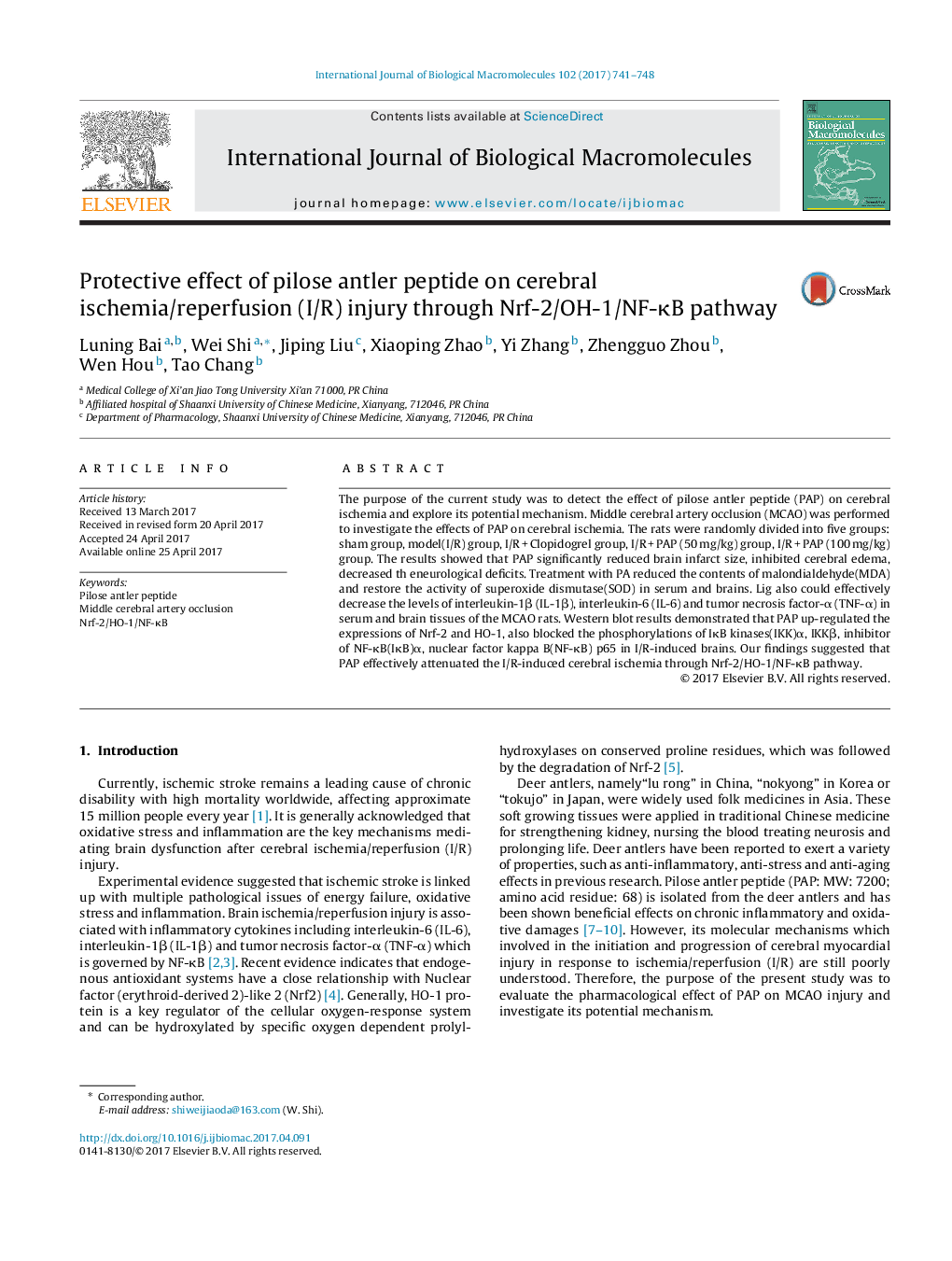| Article ID | Journal | Published Year | Pages | File Type |
|---|---|---|---|---|
| 5511801 | International Journal of Biological Macromolecules | 2017 | 8 Pages |
Abstract
The purpose of the current study was to detect the effect of pilose antler peptide (PAP) on cerebral ischemia and explore its potential mechanism. Middle cerebral artery occlusion (MCAO) was performed to investigate the effects of PAP on cerebral ischemia. The rats were randomly divided into five groups: sham group, model(I/R) group, I/R + Clopidogrel group, I/R + PAP (50 mg/kg) group, I/R + PAP (100 mg/kg) group. The results showed that PAP significantly reduced brain infarct size, inhibited cerebral edema, decreased th eneurological deficits. Treatment with PA reduced the contents of malondialdehyde(MDA) and restore the activity of superoxide dismutase(SOD) in serum and brains. Lig also could effectively decrease the levels of interleukin-1β (IL-1β), interleukin-6 (IL-6) and tumor necrosis factor-α (TNF-α) in serum and brain tissues of the MCAO rats. Western blot results demonstrated that PAP up-regulated the expressions of Nrf-2 and HO-1, also blocked the phosphorylations of IκB kinases(IKK)α, IKKβ, inhibitor of NF-κB(IκB)α, nuclear factor kappa B(NF-κB) p65 in I/R-induced brains. Our findings suggested that PAP effectively attenuated the I/R-induced cerebral ischemia through Nrf-2/HO-1/NF-κB pathway.
Related Topics
Life Sciences
Biochemistry, Genetics and Molecular Biology
Biochemistry
Authors
Luning Bai, Wei Shi, Jiping Liu, Xiaoping Zhao, Yi Zhang, Zhengguo Zhou, Wen Hou, Tao Chang,
